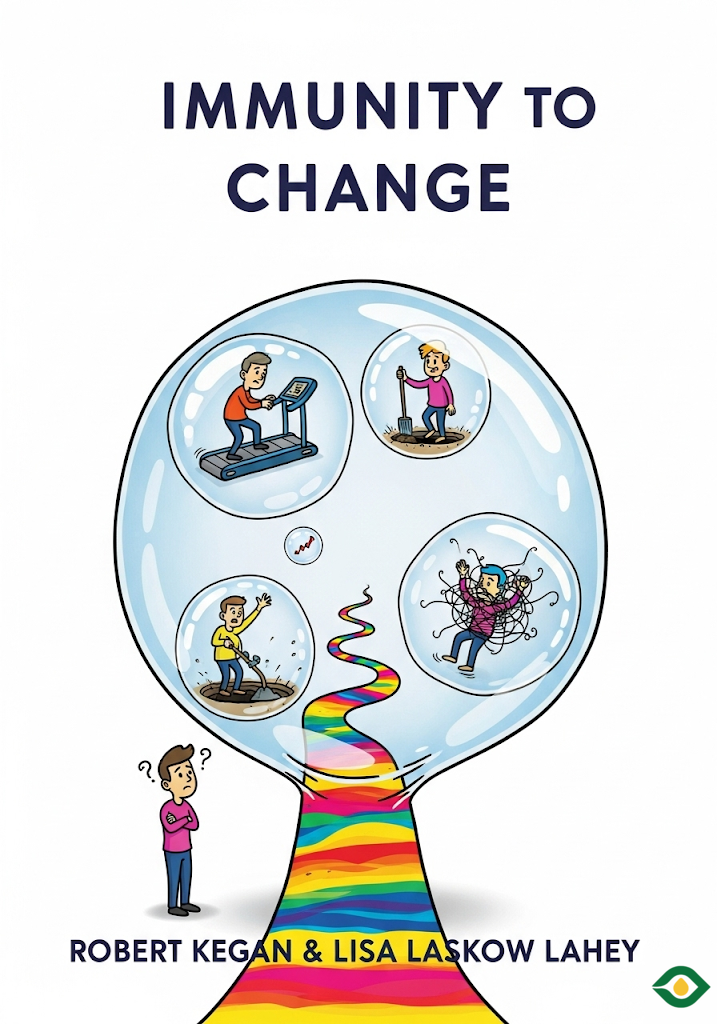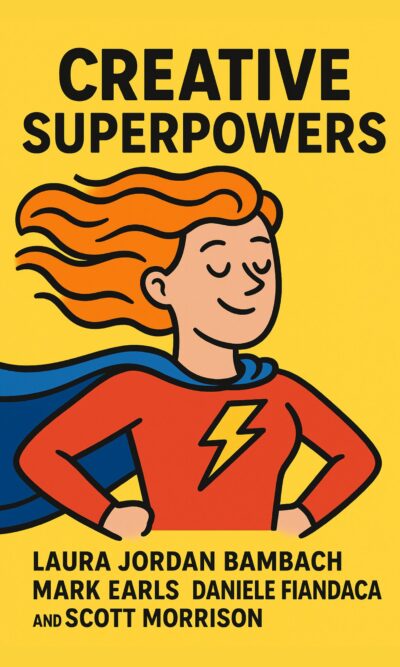Description
Immunity to Change is a book about why people, even with the best intentions, often struggle to make meaningful changes in their lives. At its heart, the book explores the hidden psychological barriers that hold us back, and offers tools to break through them. It is especially valuable for leaders who want to grow themselves and help others grow, but its lessons apply to anyone who wants to make lasting changes.
We often think leadership depends on knowledge, experience, or strategic skill. But the authors suggest that the true key to exceptional leadership is the ability to keep evolving. This means not only becoming more aware of ourselves, but also better understanding the people we work with. Change is not simply about new skills or habits. It is about developing the mind itself, so we can see the world in richer, more complex ways.
Many people assume mental growth ends with childhood. We think adults may gain knowledge, but their ways of thinking are set. Research proves this wrong. Adults continue to develop new levels of mental complexity, and this development shapes the way we understand challenges and lead others.
The book describes three major stages of adult mental growth. The first is the “socialized mind.” At this stage, people are strongly shaped by the groups they belong to. Their values and decisions are influenced heavily by others—family, colleagues, or society at large. They seek belonging, approval, and guidance from outside themselves.
The second stage is the “self-authoring mind.” Here, people begin to form their own compass. They build their own principles, independent of what others expect. They decide what matters to them, and they use those beliefs to make choices and lead their lives. Leaders at this stage are able to stand firm, give direction, and shape teams with confidence.
The third and highest stage is the “self-transforming mind.” People at this level understand that no single framework is final. They recognize that different viewpoints and systems all have value. Instead of clinging to one perspective, they adapt fluidly, weaving together multiple ways of thinking. Leaders with this mindset are better at handling complexity, building trust, and leading in times of rapid change.
The challenge is that most adults never reach the self-transforming mind. In fact, many remain in the earlier stages, even while facing situations that demand greater complexity. This creates a gap: the world needs leaders who can handle uncertainty and constant change, but many leaders are stuck with more limited ways of thinking.
So why do people struggle to grow? The book’s central idea is that we all have an “immunity to change.” Just like the body’s immune system resists foreign elements, our minds resist change that feels threatening—even if that change is good for us. For example, someone may want to listen more openly to their team, but they keep interrupting or pushing their own ideas. On the surface, they seem unwilling. But underneath, they may hold hidden commitments, like the belief that showing uncertainty will make them look weak. These hidden assumptions quietly block change.
To uncover these barriers, the authors propose the “immunity map” or “X-ray.” It is a simple framework for identifying the hidden fears and commitments that stop us. First, you state your goal: the change you truly want to make. Next, you list the behaviors that go against that goal. Then, you uncover the hidden commitments that drive those behaviors. Finally, you dig deeper to find the assumptions behind those commitments.
This process reveals why willpower alone is not enough. People do not fail because they are lazy. They fail because they are unknowingly protecting themselves from something they fear—embarrassment, failure, rejection, or loss of control. Once you make these hidden fears visible, you can test them and see if they really hold true. Often, the fear is outdated or exaggerated. By challenging it, you create space for genuine growth.
The immunity framework is not only for individuals. Teams and organizations also have collective immunities to change. A company may say it wants to innovate, but its culture may punish risk-taking. A school may claim to value creativity, but its grading system rewards conformity. By mapping out these collective contradictions, groups can start to align their actions with their goals.
For leaders, this work is especially powerful. Leadership is not just about giving orders or setting strategy. It is about helping people grow, face challenges, and overcome their own resistances. A leader who understands immunity to change can guide teams through transformation, not by forcing them, but by helping them uncover and challenge the fears that hold them back.
The book also emphasizes that growth is an ongoing journey, not a quick fix. Moving from one stage of mental complexity to another takes time, reflection, and courage. It often requires us to question long-held beliefs about ourselves and the world. This can be uncomfortable, but it is also liberating. By confronting our internal barriers, we become more adaptive, creative, and open.
One of the most important lessons is that failure is not a sign of weakness. When someone tries to change and struggles, it may be a sign that deep assumptions are at work. Instead of shaming ourselves, we can treat these struggles as clues. They point us to the hidden commitments that need to be uncovered. In this way, setbacks become opportunities for learning.
The authors also remind us that leadership is not reserved for a select few at the top. Anyone can practice leadership by working on themselves, growing their mental capacity, and helping others do the same. A parent guiding a child, a teacher working with students, a manager supporting their team—all can benefit from understanding immunity to change.
Ultimately, Immunity to Change offers a hopeful message. Change is possible, even if it feels hard. By shining a light on the hidden patterns that hold us back, we can grow beyond them. For leaders, this means becoming not only more effective in their roles, but also more human, more connected, and more transformative.
The world today is complex, fast-moving, and uncertain. Old ways of thinking are often not enough. To thrive, leaders and individuals alike must continue to evolve. Immunity to Change gives us a map for that journey. It helps us see the hidden resistances, challenge them, and open the door to a fuller, more powerful way of living and leading.





